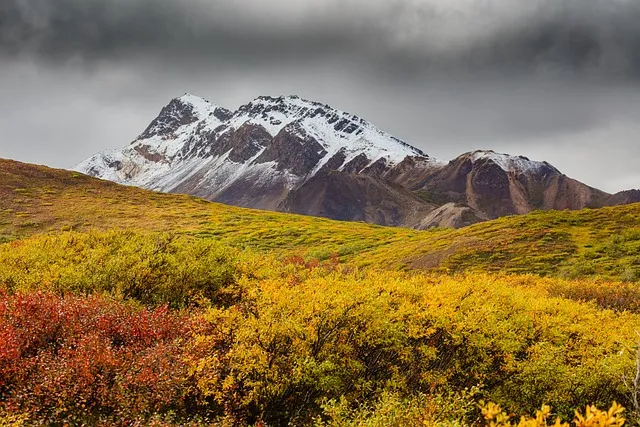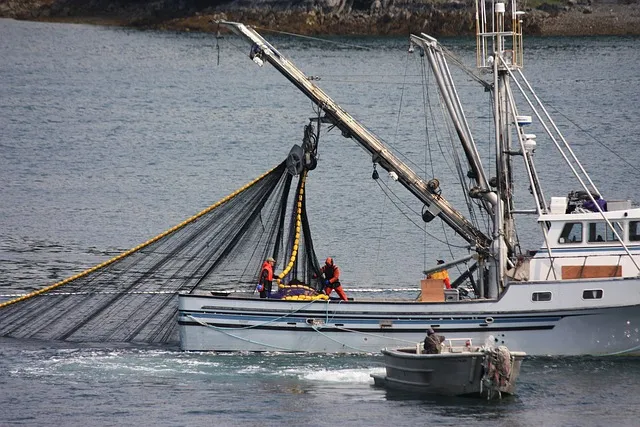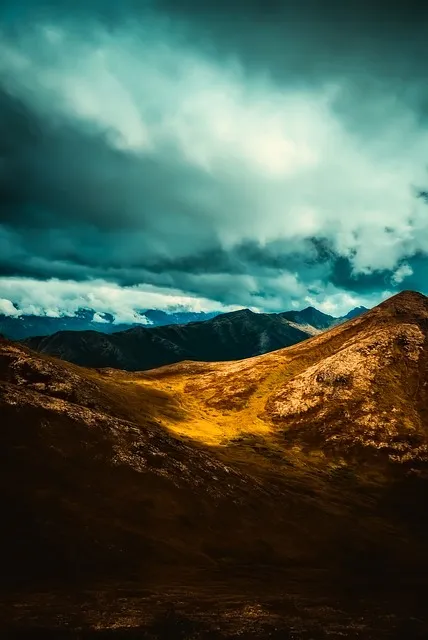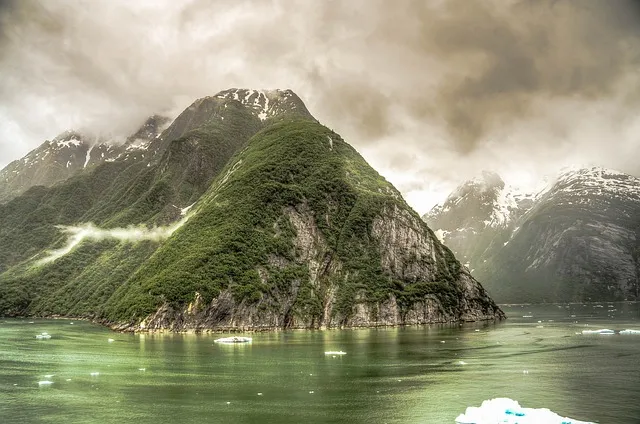Alaska's ecosystems are incredibly diverse, ranging from temperate rainforests in the south to the Arctic tundra in the north. These areas support a wide array of flora and fauna, including bears, moose, musk oxen, and various bird species, as well as marine life like salmon, otters, seals, and orcas in its maritime zones. The state's national parks—Wrangell-St. Elias, Glacier Bay, and Denali—are renowned for their natural grandeur, geological activity, and biodiversity. They are living laboratories for climate change research and serve as natural monuments that highlight the resilience of nature and the importance of environmental conservation. These parks offer visitors opportunities to experience the tranquility and untouched beauty of Alaska's wilderness, with Mount McKinley being the highest peak in North America. Each park provides a unique and transformative backcountry adventure, allowing for introspective experiences that connect visitors to the essence of the wild and offer perspectives beyond the everyday.
Embark on a journey through the pristine landscapes of Alaska, where the wilderness stretches vast and untamed. This article invites readers to explore the rich tapestry of ecosystems, from the Wrangell-St. Elias National Park’s towering peaks to Glacier Bay’s icy wonders and Denali National Park’s solitary trails. Each section offers a unique window into the natural splendor of Northern Majesty, showcasing the diverse array of flora and fauna that thrive within this frozen realm. Join us as we traverse these northern treasures, capturing their essence through words and images that convey the profound connection between nature’s grandeur and human well-being.
- Alaskan Ecosystems: A Diverse Array of Flora and Fauna
- The Unspoiled Beauty of Wrangell-St. Elias National Park
- Glacier Bay: Ice, Wildlife, and Maritime Wonders
- Denali National Park: Peaks, Paths, and the Pursuit of Wilderness Solitude
Alaskan Ecosystems: A Diverse Array of Flora and Fauna

Alaska’s wilderness encompasses a rich mosaic of ecosystems, each harboring distinct flora and fauna that reflect the diverse climatic and geographic conditions across its expansive landscape. The southern coastal regions exhibit temperate rainforests with towering Sitka spruces and western hemlocks, while the interior boasts boreal forests dominated by black and white spruce, balsam poplar, and aspen. These forests serve as vital habitats for a myriad of species, including brown and black bears, moose, wolves, and a host of avian life such as grouse, owls, and various migratory birds.
Transitioning to the Arctic tundra, one encounters an entirely different set of plant life adapted to the harsh subarctic conditions, with species like the arctic poppy, labrador tea, and dwarf birch. The fauna here is equally resilient; musk oxen, caribou, and snowy owls are among the creatures that thrive in this frigid environment. The Alaskan ecosystems are a testament to the resilience and adaptability of life, with each species playing a crucial role in maintaining the balance of these unique habitats. Maritime ecosystems along the coastline support rich kelp forests teeming with marine life, including salmon, otters, seals, and orcas, illustrating the intricate biodiversity that characterizes Alaska’s natural heritage.
The Unspoiled Beauty of Wrangell-St. Elias National Park

Wrangell-St. Elias National Park, a sprawling expanse in Alaska’s southwestern corner, stands as a monument to nature’s untamed grandeur. This UNESCO World Heritage Site boasts an array of dramatic landscapes, from towering peaks and glistening glaciers to deep valleys and vast alpine ranges. The park’s centerpiece is the Saint Elias Mountain range, which forms part of a boundary between the Pacific and North American tectonic plates, resulting in some of the most geologically significant features on Earth. The icefields here are among the largest outside the polar regions, with the Hubbard Glacier being one of the most accessible and awe-inspiring sights. This pristine wilderness offers unparalleled opportunities for adventure and reflection, inviting visitors to immerse themselves in its tranquil beauty and complex ecosystems. The park’s integrity is preserved through its remote location and the joint management by the United States and Canada, ensuring that its unspoiled state remains a living testament to Earth’s natural splendor.
Glacier Bay: Ice, Wildlife, and Maritime Wonders

Glacier Bay National Park and Preserve is a region where ice sculpted the landscape and continues to shape its destiny. The bay is surrounded by towering, ice-clad peaks of the Fairweather Range, with numerous tidewater glaciers flowing into its waters. These glaciers are remnants of massive ice sheets that once blanketed North America. As they calve into the bay, they create a symphony of sounds and a sight of dynamic beauty, offering visitors a window into Earth’s geological forces at work. The park’s maritime expanse is not only a wonder to behold but also a critical habitat for a diverse array of wildlife. Brown bears roam the shorelines, feeding on salmon that migrate through the estuaries. Humpback whales and orcas breach the surface, their acrobatics a testament to the abundance of marine life supported by this ecosystem. The interplay of ice, ocean, and terrestrial environments within Glacier Bay is a living laboratory for scientists studying climate change and its effects on biodiversity. This pristine wilderness, with its icy grandeur and rich maritime wonders, stands as a symbol of nature’s resilience and the importance of preserving such untouched environments.
Denali National Park: Peaks, Paths, and the Pursuit of Wilderness Solitude

Nestled in the heart of Alaska, Denali National Park stands as a bastion of untamed beauty and solitude. Its centerpiece, the towering Mount McKinley—commonly known as Denali, the name resonates with the spirit of the wild—is North America’s highest peak, reaching 20,310 feet into the heavens. The park’s vast expanse, encompassing six million acres of glacier-carved valleys, alpine tundra, and dense forests, offers a sanctuary for wildlife like grizzly bears, caribou, and wolves to roam freely. The pursuit of solitude here is not just a fleeting experience but a journey into the heart of wilderness, where the path less traveled leads to moments of profound tranquility. Hikers and backpackers traverse routes such as the Kahiltna Trail or the Teklanika River Trail, each step taking them further from the bustle of civilization, deeper into landscapes painted with the subtle hues of the subarctic environment, and closer to the raw essence of nature. The park’s backcountry, accessible only by foot or by floatplane, is a realm where one can truly embrace the solitude that Alaska’s wilderness offers, with each peak rising like a challenge to the sky and every path revealing another layer of this pristine world. The experience here transcends the physical journey; it is an odyssey into the soul of the wild, where the pursuit of solitude is as rewarding as the breathtaking vistas that unfold at every turn.
Alaska’s wilderness stands as a monument to the planet’s untamed beauty, with each park showcasing a unique facet of its northern majesty. From the diverse ecosystems teeming with life to the grandeur of its glaciers and mountains, these natural sanctuaries offer a window into the world as it once was, and as it continues to evolve. The collective legacy of these landscapes is not merely a reflection of ecological richness but also a testament to the importance of conservation in preserving the Earth’s biodiversity for future generations. As we reflect on the wonders captured within Alaska’s borders, it becomes clear that safeguarding such natural treasures is an imperative for all who value the intrinsic worth of our planet’s wild places.
